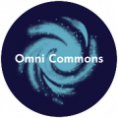|
|
 I’m excited to announce that “Human No More: Digital Subjectivities, Unhuman Subjects, and the End of Anthropology” is finally out and available to order! Human No More began as a delightfully weird, interdisciplinary array of posthumanist scholars in an invited session at the American Anthropological Association Annual Meeting in 2009. Co-edited by Neil Whitehead and Mike Wesch, the book’s topics range from the hive-mind of Anonymous, a wired indigenous tribe in Guyana, the disembodied simulacra of human-bot interaction, and the “humanity” of marginal groups in the context of state-sponsored dehumanization. My own chapter explores how the dead “live on online” through continued presence and interaction via online social networking sites. I’m excited to announce that “Human No More: Digital Subjectivities, Unhuman Subjects, and the End of Anthropology” is finally out and available to order! Human No More began as a delightfully weird, interdisciplinary array of posthumanist scholars in an invited session at the American Anthropological Association Annual Meeting in 2009. Co-edited by Neil Whitehead and Mike Wesch, the book’s topics range from the hive-mind of Anonymous, a wired indigenous tribe in Guyana, the disembodied simulacra of human-bot interaction, and the “humanity” of marginal groups in the context of state-sponsored dehumanization. My own chapter explores how the dead “live on online” through continued presence and interaction via online social networking sites.
This book is dedicated to Neil Whitehead, co-editor and rebel anthropologist, inspiration to us all, who passed away earlier this year. Check out his brilliant, evocative work here.
Turning an anthropological eye toward cyberspace, Human No More explores how conditions of the on-line world shape identity, place, culture, and death within virtual communities. On-line worlds have recently thrown into question the traditional anthropological conception of place-based ethnography. They break definitions, blur distinctions, and force us to rethink the notion of the “subject”. Human No More asks how digital cultures can be integrated and how the ethnography of both the “unhuman” and the “digital” could lead to possible reconfiguring the notion of the “human”. This provocative and ground-breaking work challenges fundamental assumptions about the entire field of anthropology. Cross-disciplinary research from well-respected contributors makes this volume vital to the understanding of contemporary human interaction. It will be of interest not only to anthropologists but also to students and scholars of media, communication, popular culture, identity, and technology.
Several months ago, someone told me about social networking sites that function as matchmaking tools for arranging marriages- a cultural practice that is common for nearly half the world’s population, including India, China, and Indonesia, as well as Hindus, Muslims, and Buddhists. In a fit of brainstorming for my next research project, this conversation came to mind and I quickly discovered Shaadi.com, an Indian version of an online dating site. Curious, I filled out a profile of my own to see what kinds of categories one could choose amongst for self-representation.
Well, first of all, it’s clear that most of the profiles on the site are filled out by parents, who are traditionally responsible for the search for and approval of potential husbands and wives. Among the more salient identity markers are Religion/Community (Hindu, Muslim, Christian, Sikh, Jain, Parsi, Buddhist, Jewish, “No Religion,” “Spiritual- Not Religious,” and “Other), Education, Profession, and Lifestyle (diet, smoking and drinking habits). Arranged-Marriages are ideally between two members of the same caste or sect, and Shaadi.com certainly covers the gamut. Potential matches are also frequently judged by education level and profession, as well as the aforementioned “lifestyle habits,” which are heavily informed by religious beliefs.
A few other things I learned about while creating a profile on the site:
• The alignment of the stars at one’s birth determines if a person is a Manglik, and Shaadi.com inquires as to one is. In Indian astrology, Mangliks are destined for difficulties in marriage. In order to balance out these negative forces, it is often suggested that a Manglik marry another Manglik, based on the idea that two negatives make a positive. Astrology in general is quite important for many Indians, especially Hindus, when it comes to marriage, and Shaadi.com users may incorporate a variety of astrological readings in their profiles.
• Like pretty much every social networking site, one can fill in an open-ended “About Me” box. However, on this site, there is also a significant section called “About My Family.” Shaadi.com offers a few pointers for users filling out this section, the first of which suggests describing the family’s outlook and approach towards life. Early on in the registration process, one could select whether her “Family Values” are traditional, moderate, or liberal. Clearly, the degree to which one’s family embraces more traditional or more liberal attitudes and values has a significant effect on the matrimonial process.
• Admirably, the site also inquires about users’ HIV status. Though figures place the percentage of HIV-infected people in India at a seemingly minute 0.36%, with the country’s enormous population this amounts to between 2 million and 3.6 million Indians living with HIV. While there is some evidence that the rate of infection is currently declining, likely due to successful prevention and awareness campaigns, there is also plenty of evidence to the contrary. Given the rampant fear and stigmatization of HIV-positive individuals in communities everywhere, marking oneself as HIV-positive on the site likely drastically reduces one’s chances at finding a spouse. However, as with both Mangliks and “Special Cases,” another profile category wherein one can indicate mental and/or physical handicaps, the site makes finding others who share their “condition” a much easier process in many ways.
This semester, I am taking only one class as I complete my graduate thesis, the last class I will ever take at Wesleyan: Nationalism and the Politics of Gender and Sexuality with Professor Kauanui. Like most of the classes I’ve taken, I’m to conduct a semester-long research project, giving me the opportunity to conduct another mini-ethnography related to online social networking. As such, I’ll be regularly posting my most pertinent and interesting findings. Stay tuned!
To date, little to no research has been published on the growing trend of arranging marriages using online matrimonial services. However, I was able to find a small body of contemporary literature concerning online romance more generally. Online courtship, like traditional arranged marriage, is a process by which two people come to know one another before their romantic love develops, if it does indeed develop. Online matchmaking services and social networking sites (such as MySpace) enable individuals to learn about potential mates before even initiating conversation, let alone meeting them face-to-face. A common criticism of Western courtship practices is that such relationships often become sexual before two people really get to know one another, and thus the passion of initial lust is frequently mistaken for love. In framing these criticisms, the high divorce rate in the US is often cited as evidence that “love marriages” are not all they’re cracked up to be:
“Arranged marriages have worked well in the past. But like I said earlier, love doesn’t necessarily last. In America the divorce rate is over 50%. I think the whole myth of instability in arranged marriages is blown out of proportion. More often than not, it’s the love marriages that end up in ruin.” (Indian High School student on Facebook India network forum, Nov. 2007)
It is important to assess the social consequences of new technologies, particularly those that may at once challenge and reinforce traditional practices and beliefs in conflicting ways. My preliminary findings reveal that online matrimonial sites empower young Indians and Indian Americans by: expanding the field of potential marriage partners; granting them a greater degree of autonomy in choosing them; and facilitating the search process, thus making it easier to find others compatible with one’s upbringing, lifestyle, personal goals, and beliefs. At the same time, many seem to view their membership on the site as either a current duty or a future inevitability, yet another obligation fulfilled in order to appease the demanding high expectations of Indian parents. The frustrations experienced by young Indian Americans in relation to the expectations of their parents is exemplified by the popular Facebook group “I can’t live my life the way I want too because I got DESI PARENTS!” which has 3,802 members. The mass appeal of Shaadi.com may, I suggest, lie in its successful fulfillment of both the young modern Indian’s drive for independence and autonomy, as well as the older generation’s inherited traditions of ensuring compatibility between their children in accordance with specific markers of identity.
Indian Americans, in particular, struggle to formulate self- and collective identities that fulfill the often contradictory demands of traditional Indian values and modern American ambitions. The result is a variety of hybridized identities collectively known as “desi.” The identity crisis faced by the children of India-born “desis” living in the Western world has given rise to the term “ABCD,” or “American-Born Confused Desi.” The situation of Indians in the 21st century is one marked by extensive transmigration, evolving communications technologies and subsequent increased career possibilities for both men and women, and the influx of Westernized ideals of self-determination and independence. There are complex forces at work here, and any sensitive exploration of these issues would do well to avoid framing them as merely binary oppositions (ie; traditionalism vs. modernism, Indian vs. Indian American). Rather, I intend to conduct original research, exploring the complex experiences of individuals encountered “in the field” through discursive analysis and participant-observation. These include native Indians as well as American-born Indians, and the various unique ways in which these individuals incorporate different Western and Indian values in the construction of their worldviews, sense of belonging in their communities, and production of self-identities in talking about marriage and engaging with Shaadi.com. In particular, understanding and articulating the plight of Indian and Indian American women, who must balance traditional norms of self-sacrifice to the family with their own desire for independence, may shed light on similar struggles faced by women around the world.
A few days ago, at an outdoor psytrance party in Boston, I caught up with a friend I had made at another party- a German cardiac surgeon-in-training. I asked how we could keep in touch, and he responded instantly, “e-mail is best”. I agreed, and the next day received an invitation to join the social networking site Multiply. I liked it instantly: utterly content-based, Multiply “is all about user powered, relationship-relevant content. Every post in your news feed is shared and discussed by people you know, either directly or indirectly through friends of friends.” Multiple blogs can be uploaded, video and photo archives shared, mp3s uploaded, reviews and events posted, and personal messages sent.
A new SNC startup, Yuwie, pays its users 50 cents for every 1,000 page views. Each time content is uploaded, a message is sent, content is viewed (including pictures) or a friend accepts an invitation to the site, it counts as a page view. I find it a pretty blatant example of the increasing commodification of social life through new technologies. However, it is slightly comforting that at least someone out there is seeking to grant users their rightful profit for the “work” they do to keep the founders of SNCs rich and popular.
I’ve been a member of MySpace since December 2004 when I was a college sophomore, about a year after the site launched. I was skeptical. Over the past two and a half years I’ve acquired exactly 75 friends. I rarely searched for people, preferring to accept or (more often) reject friend requests. I emphasize the rejection bit in tandem with the aforementioned skepticism- the vast majority of friend requests I received were from emo boys with bands or men attempting to woo me. MySpace took on an identity, in my mind, of a virtual “meat market”. Rather than meat, however, what is being consumed seems to primarily consist of young women, CPU-heavy (not to mention gaudy) profile pages, and a seemingly infinite number of musicians. The friend requests from artists quite frequently piqued my interest, and musicians and bands make up nearly half of my MySpace friends.
I never made much of an effort on MySpace to accumulate friends, and my profile is somewhat “pimped out” only after a friend told me how lame it was. The *real” social networking service, the one all my friends used and that didn’t bombard me with crappy music and headache-inducing graphics, was Facebook. Simple, clean, neat- I didn’t have to worry that my parents would find me there, and practically everyone I knew at school used it (thus, for instance, it was highly likely I could find not only kids in my classes, but a phone number or screenname if I had a question about a paper). I have 350 friends on Facebook, and nearly every one is someone I’ve met face to face.
Last summer I lived in Boston, fell in love with psytrance, and discovered a new way in which I could communicate and solidify the casual friendships I made on the dance floor: tribe.net. Though I have a mere 40 friends on Tribe, what matters is not so much my own collection of friends and spiffy personal profile, but rather the groups (“tribes”) I’m a part of. The history of tribe.net is imbued with the sounds and styles of neo-hippies, as evidenced by its popularity amongst Burners (those who attend the annual Burning Man gathering) in the San Francisco Bay area. Activity on Tribe is quite unique from most SNCs I’ve been a member of: when someone adds you as a friend, they almost always include a personal message; I have several friends from around the globe who share things in common with me; each “tribe” consists primarily of topical forums (less a *badge* than a way to actually share information about a subject with others in the know).
I will continue to expand on this internet autobiography as the months progress, there are many good stories I should definitely get written down! To those readers I know are out there: feel free to share your own experiences… no, encouraged!
|
|
 I’m excited to announce that “Human No More: Digital Subjectivities, Unhuman Subjects, and the End of Anthropology” is finally out and available to order! Human No More began as a delightfully weird, interdisciplinary array of posthumanist scholars in an invited session at the American Anthropological Association Annual Meeting in 2009. Co-edited by Neil Whitehead and Mike Wesch, the book’s topics range from the hive-mind of Anonymous, a wired indigenous tribe in Guyana, the disembodied simulacra of human-bot interaction, and the “humanity” of marginal groups in the context of state-sponsored dehumanization. My own chapter explores how the dead “live on online” through continued presence and interaction via online social networking sites.
I’m excited to announce that “Human No More: Digital Subjectivities, Unhuman Subjects, and the End of Anthropology” is finally out and available to order! Human No More began as a delightfully weird, interdisciplinary array of posthumanist scholars in an invited session at the American Anthropological Association Annual Meeting in 2009. Co-edited by Neil Whitehead and Mike Wesch, the book’s topics range from the hive-mind of Anonymous, a wired indigenous tribe in Guyana, the disembodied simulacra of human-bot interaction, and the “humanity” of marginal groups in the context of state-sponsored dehumanization. My own chapter explores how the dead “live on online” through continued presence and interaction via online social networking sites.



